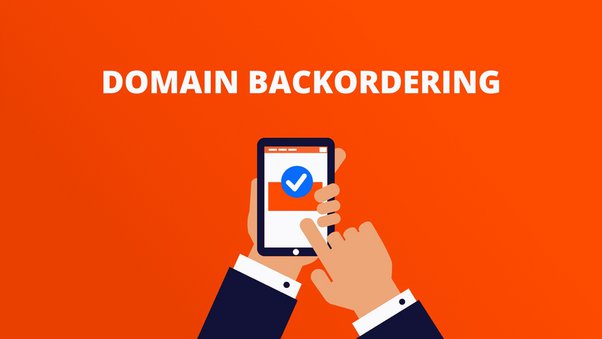In the dynamic world of domain names, the quest for securing the perfect domain can often feel like a challenging endeavor. With millions of domain names already registered and countless new ones being taken each day, finding that ideal domain can be a daunting task. Enter domain backordering—a sophisticated solution designed to help individuals and businesses secure coveted domain names that may become available in the future. This comprehensive guide will walk you through everything you need to know about domain backordering, from understanding the concept to navigating the nuances of the process.
1. What is Domain Backorder?
Domain backorder is a service provided by domain registrars and third-party providers that allows individuals or businesses to attempt to acquire a domain name that is currently registered but might become available for registration in the future. When a domain expires, it typically goes through a grace period during which the current owner can renew it. If the domain is not renewed within this grace period, it becomes available for registration by the public.
Domain backorder services are designed to monitor these domains that are nearing expiration and make an attempt to register them as soon as they become available. This gives users the chance to claim valuable or desirable domain names that are either expired or no longer actively used by their previous owners.
Here’s a brief overview of how the process works:
- Selection: Identify a domain name you wish to acquire.
- Backorder Placement: Place a backorder with a service provider.
- Monitoring: The service monitors the domain’s status, including expiration and grace periods.
- Acquisition: If the domain becomes available, the service attempts to register it on your behalf.
While backordering provides a chance to secure valuable domain names, success is not guaranteed. Multiple parties may be interested in the same domain once it becomes available, and some registrars offer backorder services directly to their customers as part of their regular domain registration services.
2. Why Use a Domain Backorder Service?
Using a domain backorder service offers several advantages, including:
- Opportunity to Secure Valuable Domains: Domain backorder services help acquire domain names that may be valuable due to their keywords, brandability, or existing traffic and backlinks. This can be particularly advantageous for businesses or investors looking to enhance their online presence.
- Competitive Advantage: Backorder services automate the monitoring and registration process, giving you an edge over other potential buyers who may also be interested in the domain.
- Brand Protection: These services can help protect your brand by allowing you to monitor and acquire domain names similar to your existing trademarks. This prevents competitors or malicious actors from registering domains that could confuse or mislead customers.
- Time and Effort Savings: Manually tracking domain expirations and attempting to register expired domains can be time-consuming. Backorder services handle this process on your behalf, saving you time and effort.
- Investment Opportunity: Domain investors can use backorder services to identify and acquire potentially valuable domains for resale or development, potentially generating significant returns.
3. How Does Domain Backordering Work?
Domain backordering involves a systematic approach to trying to secure a domain name once it becomes available after its current registration expires. Here’s a detailed breakdown of the process:
- Identifying the Domain:
- Selection: Choose a domain name you want, but it’s currently registered by someone else.
- Backorder Placement: Place a backorder for the domain with a backordering service.
- Monitoring the Domain:
- Continuous Tracking: The backorder service keeps an eye on the domain’s status, including its expiration date and any status changes.
- Domain Expiration and Grace Periods:
- Expiration: If the current owner does not renew the domain by the expiration date, it enters a grace period.
- Grace Period: This period, usually lasting 30-45 days, allows the current owner to renew the domain at the regular renewal price.
- Redemption Grace Period (RGP):
- RGP: If the domain is not renewed during the grace period, it enters the Redemption Grace Period, typically lasting 30 days. The current owner can still reclaim the domain, often at a higher fee.
- Pending Delete:
- Pending Delete: If the domain is not redeemed, it enters a pending delete status for about 5 days, during which it cannot be renewed or restored.
- Domain Deletion and Availability:
- Deletion and Availability: After the pending delete period, the domain is deleted from the registry’s database and becomes available for new registration.
- Backorder Fulfillment:
- Automated Attempts: The backorder service makes automated attempts to register the domain the moment it becomes available.
- Competition: If multiple backorders are placed, the domain might go to auction or be awarded based on the service’s policies.
- Acquisition and Registration:
- Successful Backorder: If your backorder service successfully registers the domain, you become the new owner.
- Fees: You will typically pay a backorder fee and the domain registration fee upon successful acquisition.
- Alternative Outcomes:
- Current Owner Renewal: If the current owner renews the domain during the grace or redemption period, the backorder attempt fails.
- Multiple Backorders: If multiple backorders are placed, the domain may go to auction or be awarded based on the service’s policies.
4. Advantages of Using Domain Backorders
Domain backordering can provide several key advantages:
- Prevents Missed Opportunities: Backordering increases your chances of acquiring a domain nearing expiration. Expressing interest beforehand puts you in the running when the domain becomes available.
- Faster Than Manual Registration: The automated nature of backordering can help you secure a domain faster than manual monitoring and registration attempts.
- Secures Domain Variations: Helps protect your brand by acquiring similar domain names that might otherwise be claimed by others.
- Prevents Malicious Use: By securing domain variations, you reduce the risk of malicious actors using similar domains for phishing or impersonation.
- Compared to Direct Purchase: Backordering might be more cost-effective compared to negotiating directly with the current owner, who might set a high price for the domain.
- Convenience: Automates the interest expression and registration attempt, saving you effort and time.
- Wide Availability: Most major registrars offer domain backorder services, making it easy to get started.
5. Disadvantages and Considerations
While domain backordering offers many benefits, there are some disadvantages and considerations to keep in mind:
- No Guarantee of Success: There is no assurance that you will acquire the desired domain, as multiple parties might be interested in the same domain.
- Competition: Highly desirable domain names attract more backorders, increasing competition and potentially driving up the cost.
- Additional Costs: Fees for backordering services, auctions, and domain registration can add up, especially if multiple domains are pursued.
- Risk of Domain Redemption: If the current owner decides to renew the domain during the redemption period, it can delay the domain’s availability and increase acquisition costs.
- Legal Considerations: Pursuing domains similar to existing trademarks can lead to legal issues, especially if the domain is registered in bad faith.
- Strategic Planning: Successful backordering requires careful planning and timing. Monitoring expiration dates, assessing competition, and acting quickly are crucial.
- Domain History: Some domains might have a history of spam or unethical activities, which could negatively impact your brand or website.
6. Factors Affecting Domain Backorder Success Rates
Several factors influence the success rates of domain backordering:
- Registrar and Backorder Service Quality: Reputable services with a strong track record and advanced technology tend to be more effective.
- Domain Popularity and Demand: Popular domains attract more backorders, increasing competition and decreasing the chances of success.
- Timing and Persistence: Early placement of backorders and frequent checks increase success rates.
- Current Owner’s Actions: The current owner’s decision to renew the domain during grace or redemption periods impacts backorder success.
- Auction and Bidding Processes: If multiple backorders are placed, the domain may go to auction, where your success depends on your willingness to bid higher.
- Domain Registrar Policies: Policies regarding expiration, grace periods, and drop processes can affect backordering success.
- Domain Characteristics: Top-level domains (TLDs) and domains with a clean history are more competitive.
- Technical Factors: Faster servers and advanced algorithms improve the efficiency of backordering services.
- Geographic and Legal Considerations: Regional regulations and potential trademark conflicts can impact availability and backorder success.
- Market Trends and Economic Factors: Shifts in market trends and economic conditions influence domain demand and competition.
7. Tips for Maximizing Your Domain Backordering Success
To improve your chances of successfully acquiring a domain through backordering, consider these tips:
- Target Selection:
- Focus on domains that are genuinely nearing expiration.
- Prioritize domains with significant value for your business or project.
- Consider alternative domain names if the primary choice is highly competitive.
- Backordering Strategy:
- Choose a reputable registrar with a good success rate.
- Time your backorder close to the domain’s expiration date but after the renewal grace period has begun.
- Optionally place backorders on several variations of your desired domain name to increase your chances.
- Cost Management:
- Compare backorder fees among registrars and consider volume discounts.
- Set a budget for backordering to avoid overspending.
- Explore alternative approaches if backordering fees seem excessive.
- Competitive Analysis:
- Research the competition for the domain name you want.
- Consider the potential competition from other businesses or individuals interested in the same domain.
- Stay informed about market trends and popular domains.
- Legal Considerations:
- Ensure your domain choice does not infringe on existing trademarks.
- Consult with a legal expert if you’re unsure about potential trademark issues.
- Be prepared for potential legal disputes if a similar domain is claimed by another party.
- Technical Readiness:
- Ensure that your backorder service has reliable and fast technology for monitoring and registering domains.
- Verify that your chosen registrar has a good track record for handling domain expirations and registrations.
- Monitoring and Follow-up:
- Regularly check the status of your backordered domain.
- Be prepared to act quickly if the domain becomes available.
- Follow up with your backordering service to confirm successful registration.
- Alternative Approaches:
- If your backorder fails, consider purchasing a similar domain or negotiating with the current owner if feasible.
- Explore different TLDs or variations that might still meet your needs.
- Flexibility:
- Be open to alternative domain names or TLDs if your primary choice is unavailable.
- Consider variations or creative names that are still relevant to your brand or project.
- Engagement with Domain Brokers:
- For high-value domains, engaging a domain broker may help negotiate the purchase directly with the current owner.
- Brokers can assist with acquiring domains that are not actively available for registration.
- Documentation and Record Keeping:
- Keep records of all backordering attempts, including dates, fees, and correspondence.
- Document your domain acquisition strategy and any relevant legal considerations.
8. Conclusion
Domain backordering is a valuable tool for securing the perfect domain name in an increasingly crowded digital landscape. By understanding the process, advantages, and potential drawbacks, you can make informed decisions and enhance your chances of success. Whether you’re seeking to protect your brand, invest in valuable domains, or secure a unique online presence, domain backordering provides a strategic approach to achieving your goals.
With the right strategy, research, and persistence, you can navigate the complexities of domain backordering and acquire the domain name that aligns with your vision and objectives. Happy backordering!

